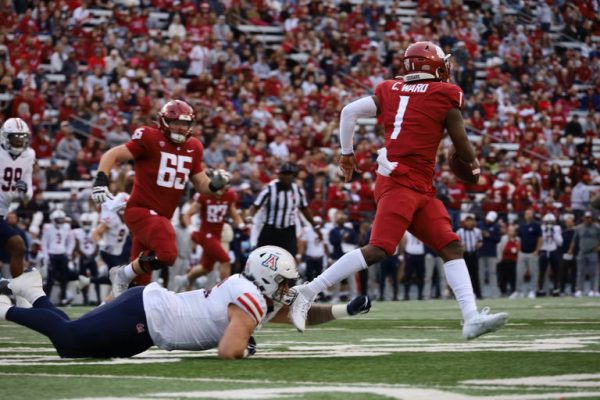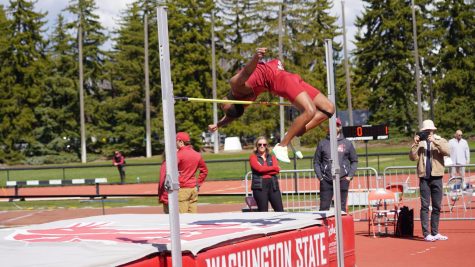Title IX: Imperfect, but necessary
Former WSU soccer forward Amy Neal dribbles the ball past a Brigham Young University defender in a 2-1 double overtime loss on Aug. 19 at Lower Soccer Field.
April 13, 2017
Before Title IX was passed in 1972, approximately 300,000 women played high school or college sports across America.
Compare that number to now, and you’ll find that athletic participation among women has increased tenfold. Nobody can doubt the factual evidence that proves Title IX has increased opportunities for women in sports.
However, there are additional statistics that show a counter-effect. For example, hundreds of men’s athletic programs, such wrestling or baseball, have been cut since the enactment of Title IX in order to maintain a balance of participation numbers between men’s and women’s athletic teams.
It’s easy to automatically cast blame onto Title IX for the cutbacks on the men’s side, but Chris Lebens, a WSU graduate sport law professor, isn’t buying it. Lebens also has a juris doctor from the University of Idaho and disagrees with the common “quota system” argument.
“The argument is made quite often that Title IX is a ‘quota system,’ ” Lebens said. “Many have said that it is a way to force women into playing sports. People argue that due to this quota, men have lost opportunities. This is completely baseless. In reality, Title IX has increased opportunities in university athletic departments.”
Just because men’s programs have been cut by the hundreds, this does not necessarily mean participation opportunities have decreased. In fact, the opposite has occurred.
The number of male athletes who participate in collegiate athletics has increased by about one million since Title IX was passed. Granted, the increase isn’t as substantial with regard to the increase among female athletes, but the amount of opportunities spiked nonetheless.
“The fact that wrestling, or baseball have been cut from school athletic departments to help stabilize what we might refer to as equality is not because of quotas,” Lebens said. “It is equal opportunities.”
A stigma exists that universities have to cut men’s athletic programs if the opportunities for men outweigh the participation opportunities provided for women. While this is often the case, other options can be taken to comply with the proportionality aspect of Title IX.
One option is to simply increase participation opportunities for women. Instead of axing men’s wrestling or baseball, add women’s soccer or softball. This isn’t the most cost-effective solution, but it eliminates discrimination on the basis of sex while also avoiding cutbacks on men’s sports.
Per ncaa.com, about 30 percent of athletic spending goes toward women’s sports. That figure does not match the 44 percent of NCAA student-athletes who are women.
From this combination, we can gauge that Title IX is not without its weaknesses. Lebens also said the system is not perfect, but that it is the best regulation we have in place at this time.
“The three-prong test that determines compliance with Title IX in athletics has a bit of an issue in that the second prong of the test shows compliance if you can demonstrate that you are working towards compliance,” Lebens said. “In my eyes, ‘working on it’ is not equality.”
WSU has not had too many problems with proportionality or scholarship sections of Title IX compliance, but it has had its fair share of benefit issues. Currently, the university is being investigated for the fourth time in five years on this matter.
“There are still huge investigations taking place at universities for not equally giving benefits to people,” Lebens said. “Benefits can be as much as the university accurately reporting sexual violence.”
Regardless of the outcome of the investigation or the future of Title IX, Lebens said equal protection laws must be followed.
“As societies grow and change, so must the laws,” he said. “Perhaps it is time to get a congressional committee or senate judiciary committee to look into revising it, but until it changes, it is [the] law and I have zero sympathy for what may happen to any university that refuses to comply with equal protection laws.”





















